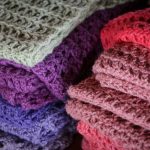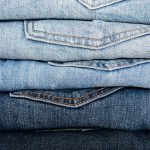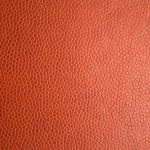When you're faced with the choice between microfiber and chamois for drying, it's essential to consider the unique properties each material brings to the table. Microfiber boasts impressive absorbency and quick-drying capabilities, while chamois offers a soft touch and a streak-free finish. However, these benefits come with their own sets of challenges. So, how do you determine which option truly meets your drying needs without compromising on quality or efficiency? Let's explore the key differences and help you make an informed decision.
Table of Contents
Key Takeaways
- Microfiber absorbs up to seven times its weight in liquid, outperforming chamois in moisture absorption.
- Microfiber dries surfaces faster and offers greater versatility for various drying tasks.
- Chamois provides a smooth glide for delicate surfaces but is typically less efficient for general drying.
- Microfiber is machine washable, while chamois requires careful hand washing and maintenance.
Overview of Microfiber
Microfiber is a synthetic material that's designed to soak up moisture quickly and efficiently. You'll find that its fine fibers, which are often made from polyester and polyamide, create a textured surface that captures water, dirt, and oil with ease. This unique structure allows microfiber cloths to absorb up to seven times their weight in liquid, making them an ideal choice for drying.
When you use microfiber for drying, you're not just getting a highly absorbent material; you're also benefiting from its lightweight and durable nature. Microfiber dries quickly, too, reducing the likelihood of mildew or odors developing. It's also soft, ensuring that you won't scratch surfaces while you clean.
One of the best things about microfiber is its versatility. You can use it on various surfaces, from glass to car paint, without worrying about lint. Plus, it's machine washable, making maintenance straightforward.
Overview of Chamois
When you consider chamois, it's important to understand its unique material composition and how it impacts absorbency and performance.
You'll also want to keep care and maintenance in mind to maximize its lifespan.
Let's explore these key points to see how chamois stacks up against microfiber.
Material Composition Differences
Chamois, traditionally made from the skin of sheep or other animals, offers unique properties that differentiate it from synthetic materials. The natural fibers provide a soft, pliable texture that conforms easily to surfaces, making it ideal for drying delicate items without scratching. You'll notice that chamois has a distinctive look and feel, often characterized by its buttery softness and slight sheen.
Unlike synthetic materials, chamois tends to be less prone to static buildup, which can be a significant advantage, especially when working with electronic devices or delicate finishes. It's also worth noting that chamois can be more environmentally friendly, as it's made from renewable resources.
However, the composition of chamois does require more care in maintenance compared to synthetic options. Regular washing and proper drying are crucial to prevent the leather from becoming stiff or cracking. This attention to detail ensures that the chamois remains effective and retains its unique properties over time.
Absorbency and Performance
Offering impressive absorbency, chamois quickly soaks up moisture, making it a top choice for drying various surfaces efficiently. When you use chamois, you'll notice its unique texture allows it to glide over surfaces, picking up water without leaving streaks or lint behind. This characteristic is particularly beneficial when drying cars, as it helps you achieve a spotless finish.
Chamois is known for its durability, allowing you to use it repeatedly without losing its absorbent properties. The material can absorb several times its weight in water, so you won't need to wring it out as often as you might with other drying materials. You'll find that it's great for drying not just vehicles but also glass, countertops, and other surfaces where moisture can leave unsightly marks.
Another advantage of chamois is its lightweight nature. You can easily maneuver it around tight spots, making your drying tasks quicker and more manageable. Whether you're detailing your car or just tackling spills at home, chamois stands out for its performance, ensuring you get the job done efficiently and effectively. Its blend of absorbency and ease of use makes it a reliable option for drying.
Care and Maintenance Tips
To keep your chamois in top condition, regular cleaning and proper storage are essential for maintaining its absorbency and longevity. Follow these care and maintenance tips to ensure your chamois lasts:
- Rinse After Use: Always rinse your chamois with cold water immediately after use. This removes dirt and prevents buildup that can affect performance.
- Gentle Washing: Occasionally, wash your chamois with a mild detergent in cold water. Avoid bleach and fabric softeners, as they can damage the material.
- Air Dry: Never wring out your chamois. Instead, lay it flat or hang it up to air dry. Avoid direct sunlight, which can cause fading and degradation.
- Proper Storage: Once dry, store your chamois in a cool, dry place. Avoid folding it tightly, as this can create creases that affect its absorbency.
Absorbency Comparison
Microfiber towels typically absorb more water than traditional chamois, making them a popular choice for drying surfaces efficiently. When you're looking for a towel that can soak up moisture quickly, microfiber excels due to its unique structure. The fibers are finer than a human hair, creating a larger surface area that allows for superior water retention.
Here's a quick comparison of absorbency features:
| Feature | Microfiber | Chamois |
|---|---|---|
| Water Absorption | High | Moderate |
| Drying Speed | Fast | Slower |
| Surface Feel | Soft and plush | Smooth and supple |
As you can see, microfiber not only absorbs more water but also dries surfaces faster. Chamois, while effective, doesn't match microfiber's absorbency and drying capabilities. If you're after efficiency and convenience in drying, microfiber is the clear winner. Keep this in mind when choosing the right towel for your drying needs to ensure you get the best results.
Durability and Longevity
While microfiber towels excel in absorbency, their durability and longevity can vary significantly compared to chamois.
When choosing between the two, consider these factors that affect how long each option will last:
- Material Quality: High-quality microfiber can withstand many washes, while lower-quality options may wear out quickly.
- Usage Frequency: If you use your drying tool often, a chamois might hold up better over time due to its natural properties.
- Wear and Tear: Microfiber can fray and pill with extended use, while chamois tends to maintain its integrity longer under similar conditions.
- Storage Conditions: Proper storage can impact longevity; keep both towels in dry, cool places to extend their life.
In general, a well-maintained chamois will often outlast microfiber towels, especially if you prioritize longevity.
However, the right choice ultimately depends on your specific drying needs and how you intend to use the product.
Care and Maintenance
Taking care of your microfiber or chamois towels is essential for their performance and lifespan.
You need to follow proper washing techniques and storage recommendations to keep them in top shape.
Let's explore how to maintain these drying tools effectively.
Proper Washing Techniques
To keep your drying cloths in top shape, it's essential to wash them properly after each use. Whether you're using microfiber or chamois, following the right washing techniques ensures they last longer and perform better. Here's how you can do it:
- Rinse Immediately: After using your cloths, rinse them in cold water to remove dirt and grime. This prevents stains from setting in.
- Use Gentle Detergent: Opt for a mild detergent. Harsh chemicals can damage the fibers, reducing their effectiveness over time.
- Avoid Fabric Softener: Don't use fabric softeners or bleach. They can coat the fibers, making them less absorbent and causing them to lose their drying capabilities.
- Air Dry: Whenever possible, air dry your cloths instead of tossing them in the dryer. High heat can shrink and damage the material, especially for microfiber.
Storage Recommendations
Proper storage of your drying cloths ensures they maintain their effectiveness and longevity, so consider keeping them in a clean, dry area away from direct sunlight.
For microfiber cloths, it's essential to avoid harsh chemicals or strong odors that could compromise their absorbency. Store them in a breathable container or drawer to prevent moisture buildup, which can lead to mildew.
Chamois cloths, on the other hand, require a bit more attention. Make sure they're entirely dry before storing them to avoid mold growth. Roll them up loosely and place them in a breathable bag or a drawer. Avoid folding them tightly, as this can create creases that reduce their effectiveness.
If you're not using your cloths for an extended period, consider keeping them in a sealed bag with a moisture-absorbing packet to maintain freshness.
Regularly check for any signs of wear or damage, and replace them if necessary. By following these storage recommendations, you'll ensure your microfiber and chamois cloths remain in top condition, ready to deliver optimal drying performance whenever you need them.
Cost Analysis
When comparing the costs of microfiber and chamois, you'll find that microfiber often offers a more budget-friendly option without sacrificing quality. Chamois can be pricier upfront, and while they've their benefits, you might end up spending more in the long run. Here's a quick breakdown to help you decide:
- Initial Cost: Microfiber cloths typically range from $5 to $20, while a good chamois can cost between $20 and $50.
- Durability: Microfiber lasts longer due to its synthetic fibers, reducing the need for frequent replacements. Chamois can wear out faster, especially with improper care.
- Maintenance: Microfiber is generally machine washable and dries quickly, saving you time and resources. Chamois requires more care, often needing hand washing and air drying.
- Versatility: Microfiber can be used for various tasks beyond drying, enhancing its value. Chamois mainly serves a specific purpose.
Ultimately, if you're looking for efficiency and cost-effectiveness, microfiber is likely your best bet. It not only saves you money but also provides excellent performance in drying.
Frequently Asked Questions
Can Microfiber and Chamois Be Used on All Surfaces?
Yes, you can use microfiber and chamois on most surfaces. Microfiber's soft texture won't scratch, while chamois absorbs moisture effectively. Just ensure the surface is compatible to avoid any potential damage during cleaning or drying.
Are There Environmentally Friendly Options for Microfiber and Chamois?
You can find environmentally friendly options for both microfiber and chamois. Look for products made from recycled materials or organic fibers. These choices reduce waste and help you maintain a sustainable cleaning routine while being effective.
Which Is Better for Car Detailing Specifically?
When detailing your car, you'll find microfiber towels are often better. They absorb more water, trap dirt effectively, and won't scratch surfaces, making your detailing process smoother and more efficient. You'll notice the difference immediately!
Do Microfiber and Chamois Leave Lint Behind?
When you're drying surfaces, microfiber generally doesn't leave lint behind, while chamois might. If you want a lint-free finish, go for microfiber; it's designed to trap dirt and moisture without shedding fibers.
How Do I Store Microfiber and Chamois Towels?
To store microfiber and chamois towels, keep them in a cool, dry place. Avoid direct sunlight and damp areas. You can fold them neatly or hang them, ensuring they stay fresh and ready for use.
- Nonwoven Fabrics in the Medical Industry: An Overview - July 11, 2025
- Can You Iron Nonwoven Fabric? A Safety Guide - July 11, 2025
- Exploring the Strength and Durability of Nonwoven Fabrics - July 11, 2025







